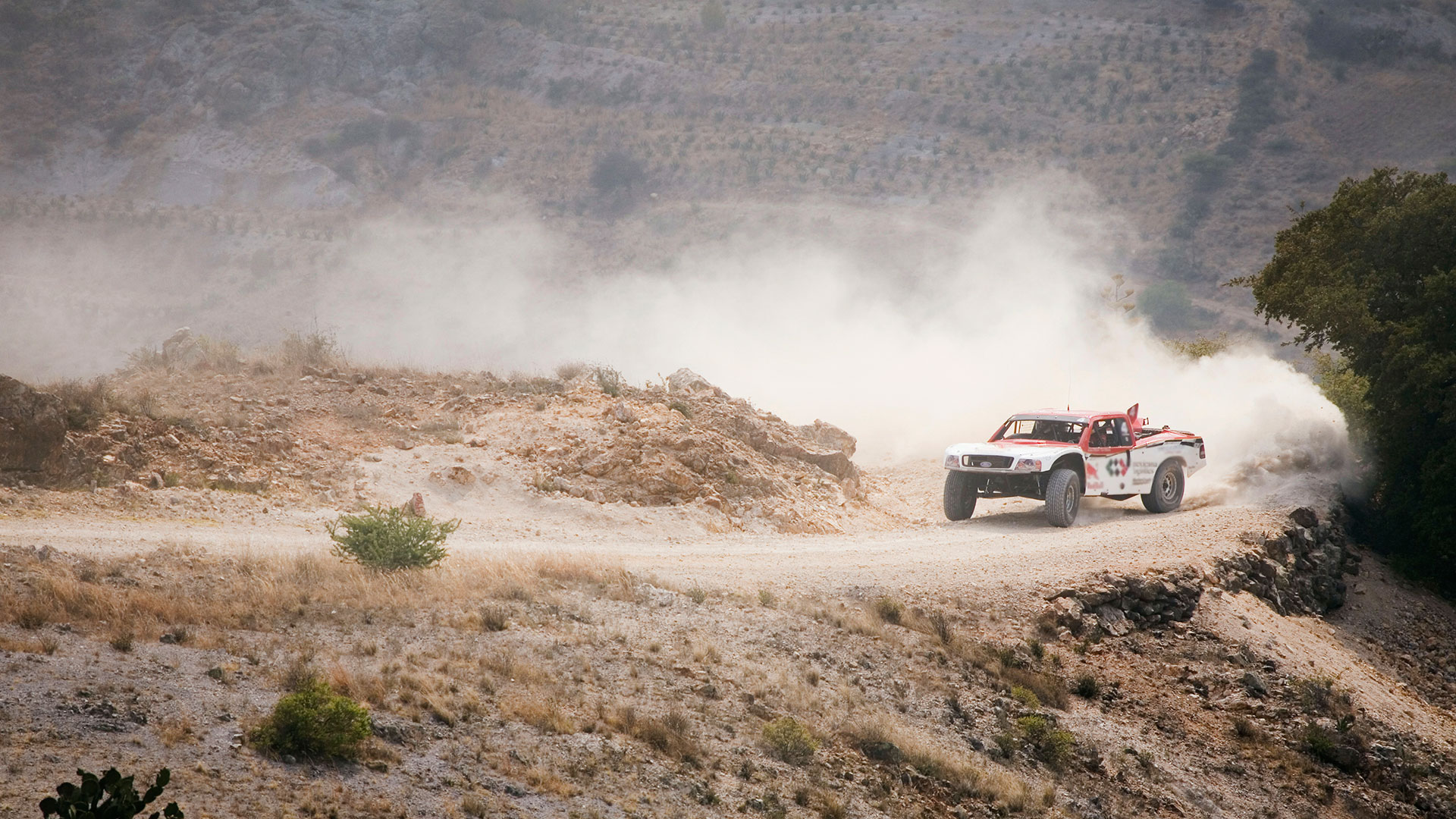

An eight-year-old kid was killed within minutes of the start of the Baja 500.
Details, blame, criticism—not worth a damn thing. For an instant, a trophy truck, a literally awesome machine, shared space with a fragile little body. In Ensenada, on one of the few crowd-controlled parts of the race track. That’s completely inexcusable.
Proximity to these incredible machines is part of the charm of Baja racing. Nowhere is that charm more of a draw than in The Wash, a long, sometimes septic, mostly dry stream bed that runs straight through Ensenada. Dotted with stream crossings and jumps, it’s a racer’s first chance to stretch their legs. Its bridges and banks are lined thick with spectators. Miles of them cheering, yelling, and drinking cold beer. It’s iconic; a coliseum where the action comes howling at you once a minute. But the Romans didn’t stand so damned close to the lions.
Standing in The Wash, the compulsion to test yourself, to lean in a little closer, is very real. Like what happens when a train passes on a platform. I felt it photographing the Baja 1000 from the sidelines in November. It’s no wonder that the crowd inches closer as the racing line becomes clear. Trophy trucks are breathtaking, incredible things: I’d want my kids to be made speechless by these machines, too. And then, to watch them to gather all that wonder back in behind wild smiles.
The only thing that deserves a future more than desert racing is a kid who might come to love it. They’re the best part of this thing, the grinning nuts who rightfully worship local heroes like Apdaly Lopez and climb all over the cars of nobodies like me. Scamming stickers and autographs and learning about the trucks, and the sport.
Eight-year-old kids don’t know how dangerous the outside of a race track corner is. Or how to spot trouble coming. Their short legs can’t carry them out of the way in a bound, and their parents can’t be trusted to do that in a pinch. It all happens too fast. Tragically, on Saturday, it all did.
There’s no simple way to keeps spectators safe over 500 miles of racing. But The Wash is different. It’s policed and patrolled and there’s reasonably efficient crowd control thanks to Ensenada and Federal police. Inside a set course it should be possible to keep avoidable accidents from happening. Saturday’s was an avoidable accident.
It takes a line in the sand—a literal and a figurative one. Racing in The Wash needs to stop immediately if spectators are on the outside of a corner, or in an impact zone. Full stop. Race organizers need to designate red zones, and give Baja’s track marshals the authority—and the mandate—to red-flag racing in and around The Wash the instant someone wanders into those zones.
And there aren’t many spots where red zones would be called for. The entrance to the wash, where this weekend’s tragedy occurred, and the areas around bridge abutments, and the outsides of a few corners. That’s it. There’s room in The Wash for everyone. Spectators would still feel the unleashed horsepower vibrate the air in their lungs. They’d still get pelted by sand and rocks, and feel plenty part of the action.
In an ideal world, the red zones would become self-policing. Everyone wants racing to continue smoothly. Set foot in a red zone and you should be greeted with whistles and jeers and thrown beer cans because you’re holding up the show. It’s a manageable change—a simple shift in rules and culture. One that would keep spectators and drivers alike much safer. For the next generation of racers and fans, it’s the least we can do.